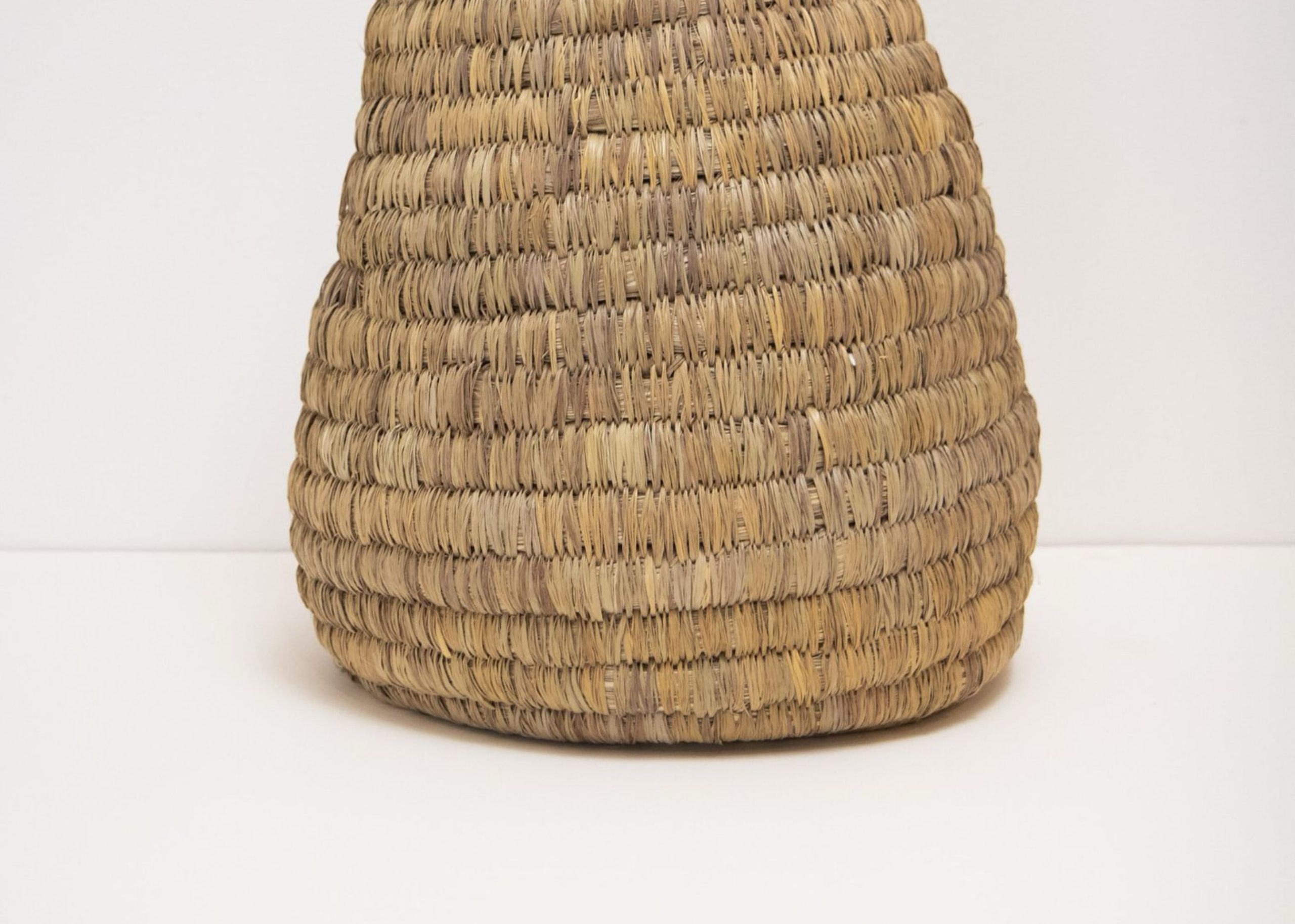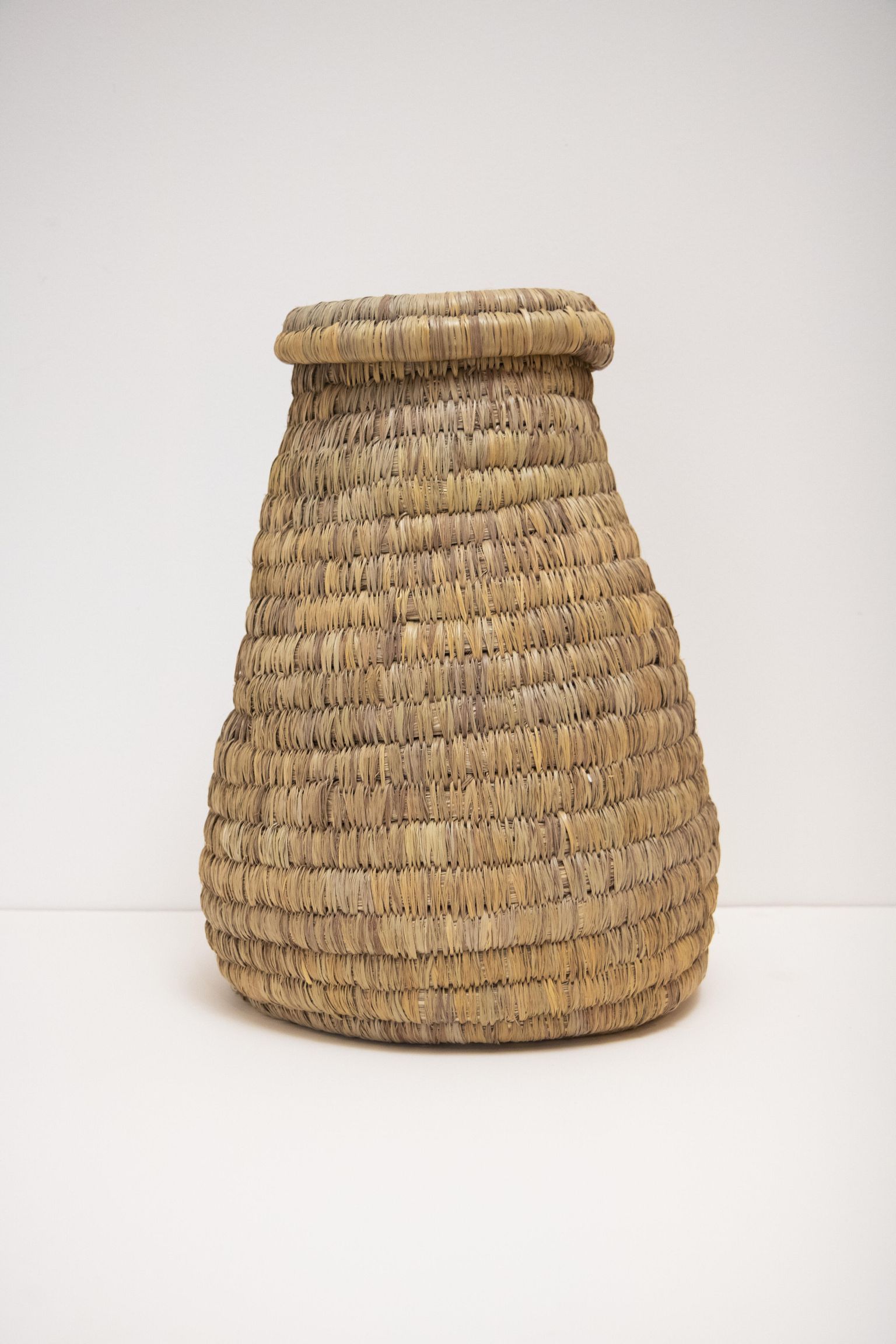
By Blake Belcher
A straw basket stands about knee-height, built with rows of concentric coils that taper at the top to create a teardrop shape. It’s made by William ‘Old Iron’ Colebrooke (1930–2009), a fisherman and sponger from Red Bays, Andros. As far as baskets go, it’s relatively tall, but for Colebrooke, it’s modest. Some of his largest baskets were so tall he could fit inside and be completely hidden. Its construction is impressive—clearly meant to be functional, but you can’t help but appreciate its sheer craft. This is an object, yes, but it’s also much more than that—it’s culture.
In her 2004 curatorial essay for the National Exhibition 2, Dr Erica James asks a question that still feels relevant today: “Will Bahamian art ever transcend objecthood?” In art terms, objecthood is when you’re aware of a work mostly as a thing—its materials and structure—rather than being transported somewhere else. Many argue art should do the opposite: envelop you in the work so you forget its object-ness entirely. Colebrooke’s Large Basket with Lid in Red Bays Style (2006) does just that.

Straw work has long been dismissed as craft rather than art. In a 2023 Tribune article, Rebecca Small, President of the Straw Businessperson Society, said, “When I sell my straw for $20, the tourist wants it for $5,” highlighting how its perceived value gets tied to modest materials rather than the labour, knowledge, and skill required. Small also talked about the sustainability challenges: the silver top palm is expensive, difficult to source, and sometimes unavailable. This forces straw vendors to choose between economic survival and cultural authenticity. Do we use non-traditional materials to stay profitable, or preserve our practices at a loss?
Maybe survival and sustainability look different when we think about it another way. Value isn’t always monetary; Colebrooke’s baskets remind me of my grandmother under the tamarind tree in Long Island, plaiting for hours. She made functional things like placemats, hats, and baskets, but sometimes she just plaited to plait. Sometimes value comes from the act itself, the passing down, the quiet ritual that simultaneously connects us to the past, present, and future.
Evolution is its own form of sustainability. Tradition shifts, adapts, and survives in new ways. Artists like Anina Major and Averia Wright are taking these traditional influences of straw and weaving them into their work. Major transforms woven forms into clay, while Wright uses straw in performance and video, turning something meant to wear down into something monumental and lasting.
There’s no perfect answer to Dr James’s question. But seeing this progression of straw work, I think Bahamian art does transcend objecthood. From Colebrooke’s hands in Red Bays, to my grandmother’s plaiting in Long Island, and even Major’s monumental sculptures, they embody something that can’t be bought or sold. And that’s transcendent.